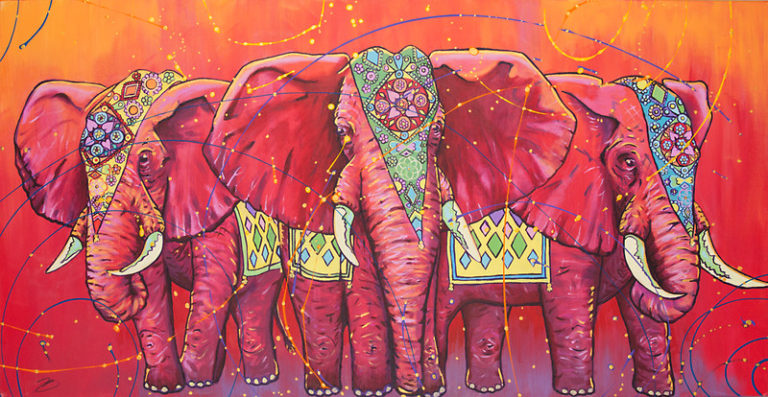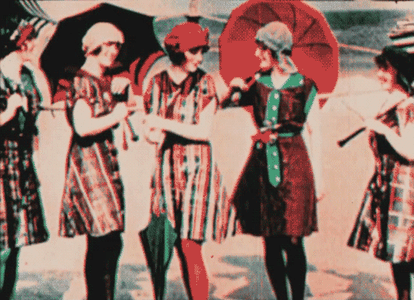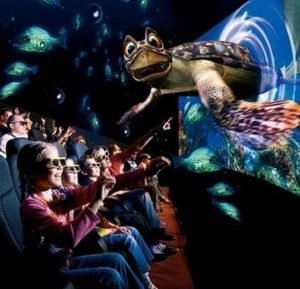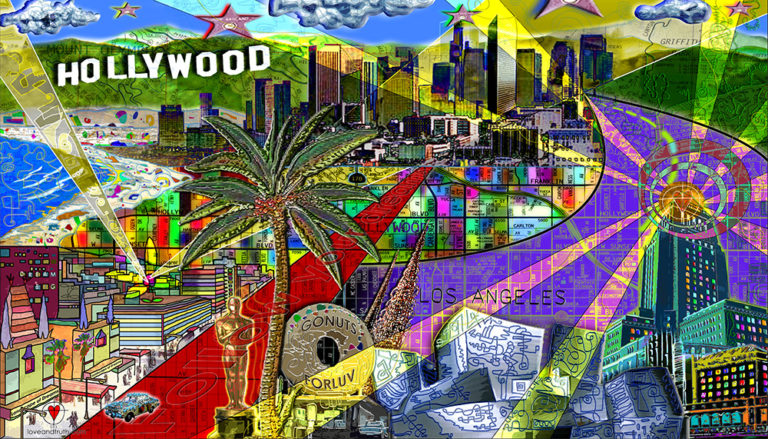
A VERY SHORT HISTORY OF CINEMA

The National Science and Media Museum explores the science and culture of light and sound technologies and their impact on our lives. On this blog we share behind-the-scenes stories, coverage of our exhibitions, festivals and events, and hidden treasures from our world-class collection.
Cinematography is the illusion of movement by the recording and subsequent rapid projection of many still photographic pictures on a screen. A product of 19th century scientific endeavour, it has, over the past century, become an industry employing many thousands of people and a medium of mass entertainment and communication.
EARLY CINEMA
 No one person invented cinema. However, in 1891 the Edison Company in the USA successfully demonstrated a prototype of the Kinetoscope, which enabled one person at a time to view moving pictures. The first to present projected moving pictures to a paying audience (i.e. cinema) were the Lumière brothers in December 1895 in Paris.
No one person invented cinema. However, in 1891 the Edison Company in the USA successfully demonstrated a prototype of the Kinetoscope, which enabled one person at a time to view moving pictures. The first to present projected moving pictures to a paying audience (i.e. cinema) were the Lumière brothers in December 1895 in Paris.
At first, films were very short, sometimes only a few minutes or less. They were shown at fairgrounds and music halls or anywhere a screen could be set up and a room darkened. Subjects included local scenes and activities, views of foreign lands, short comedies and events considered newsworthy.
The films were accompanied by lecturers, music and a lot of audience participation—although they did not have synchronised dialogue, they were not ‘silent’ as they are sometimes described.
THE RISE OF THE FILM INDUSTRY
By 1914, several national film industries were established. Europe, Russia and Scandinavia were as important as America. Films became longer, and storytelling, or narrative, became the dominant form.
 As more people paid to see movies, the industry which grew around them was prepared to invest more money in their production, distribution and exhibition, so large studios were established and special cinemas built. The First World War greatly limited the film industry in Europe, and the American industry grew in relative importance.
As more people paid to see movies, the industry which grew around them was prepared to invest more money in their production, distribution and exhibition, so large studios were established and special cinemas built. The First World War greatly limited the film industry in Europe, and the American industry grew in relative importance.
The first 30 years of cinema were characterised by the growth and consolidation of an industrial base, the establishment of the narrative form, and refinement of technology.
ADDING COLOUR
 Colour was first added to black-and-white movies through tinting, toning and stencilling. By 1906, the principles of colour separation were used to produce so-called ‘natural colour’ moving images with the British Kinemacolor process, first presented to the public in 1909.
Colour was first added to black-and-white movies through tinting, toning and stencilling. By 1906, the principles of colour separation were used to produce so-called ‘natural colour’ moving images with the British Kinemacolor process, first presented to the public in 1909.
The early Technicolor processes from 1915 onwards were cumbersome and expensive, and colour was not used more widely until the introduction of its three-colour process in 1932.
ADDING SOUND
 The first attempts to add synchronised sound to projected pictures used phonographic cylinders or discs.
The first attempts to add synchronised sound to projected pictures used phonographic cylinders or discs.
The first feature-length movie incorporating synchronised dialogue, The Jazz Singer (USA, 1927), used the Warner Brothers’ Vitaphone system, which employed a separate record disc with each reel of film for the sound.
This system proved unreliable and was soon replaced by an optical, variable density soundtrack recorded photographically along the edge of the film.
CINEMA’S GOLDEN AGE
 By the early 1930s, nearly all feature-length movies were presented with synchronised sound and, by the mid-1930s, some were in full colour too. The advent of sound secured the dominant role of the American industry and gave rise to the ‘Golden Age of Hollywood’.
By the early 1930s, nearly all feature-length movies were presented with synchronised sound and, by the mid-1930s, some were in full colour too. The advent of sound secured the dominant role of the American industry and gave rise to the ‘Golden Age of Hollywood’.
During the 1930s and 1940s, cinema was the principal form of popular entertainment, with people often attending cinemas twice weekly. In Britain the highest attendances occurred in 1946, with over 31 million visits to the cinema each week.
THE ASPECT RATIO
 Thomas Edison had used perforated 35mm film in the Kinetoscope, and in 1909 this was adopted as the industry standard. The picture had a height-to-width relationship—known as the aspect ratio—of 3:4 or 1:1.33.
Thomas Edison had used perforated 35mm film in the Kinetoscope, and in 1909 this was adopted as the industry standard. The picture had a height-to-width relationship—known as the aspect ratio—of 3:4 or 1:1.33.
With the advent of optical sound, the aspect ratio was adjusted to 1.37:1. Although there were many experiments with other formats, there were no major changes in screen ratios until the 1950s.
COMPETING WITH TELEVISION
The introduction of television in America prompted a number of technical experiments designed to maintain public interest in cinema.
 In 1952, the Cinerama process, using three projectors and a wide, deeply curved screen together with multi-track surround sound, was premiered. It gave audiences a sense of greater involvement and proved extremely popular. However, it was technically cumbersome, and widescreen cinema did not begin to be extensively used until the introduction of CinemaScope in 1953 and Todd-AO in 1955, both of which used single projectors.
In 1952, the Cinerama process, using three projectors and a wide, deeply curved screen together with multi-track surround sound, was premiered. It gave audiences a sense of greater involvement and proved extremely popular. However, it was technically cumbersome, and widescreen cinema did not begin to be extensively used until the introduction of CinemaScope in 1953 and Todd-AO in 1955, both of which used single projectors.
CinemaScope had optically squeezed images on 35mm film which were expanded laterally by the projector lens to fit the width of the screen; Todd-AO used film 70mm wide. By the end of the 1950s, the shape of the cinema screen had effectively changed, with aspect ratios of either 1:2.35 or 1:1.66 becoming standard.
Specialist large-screen systems using 70mm film have also been developed. The most successful of these has been IMAX, which today has more than 1,000 screens worldwide. For many years IMAX cinemas have showed films specially made in its unique 2D or 3D formats, but they are increasingly showing versions of popular feature films which have been digitally remastered in the IMAX format, often with additional scenes or 3D effects.
Stereo sound, which had been experimented with in the 1940s, also became part of the new widescreen experience.
CINEMA MAKES A COMEBACK
 While cinemas had some success in fighting the competition of television, they never regained the position and influence they once held, and over the next 30 years audiences dwindled. By 1984 cinema attendances in Britain had sunk to one million a week.
While cinemas had some success in fighting the competition of television, they never regained the position and influence they once held, and over the next 30 years audiences dwindled. By 1984 cinema attendances in Britain had sunk to one million a week.
Since then, however, that figure has nearly trebled with the growth of out-of-town multiplex cinemas following the building of the first British multiplex at Milton Keynes in 1985.
Although America still appears to be the most influential film industry, the reality is more complex. Many films are produced internationally—either made in various countries or financed by multinational companies that have interests across range of media.
Today, most people see films on television (whether terrestrial or satellite or on video of some kind) and we are also moving towards a web-based means of delivery.
WHAT’S NEXT?
 In the past 20 years, film production has been profoundly altered by the impact of rapidly improving digital technology. Though productions may still be shot on film (and even this is becoming less commonplace) most subsequent processes, such as editing and special effects, are undertaken on computers before the final images are transferred back to film. The need for this final transfer is diminishing as more cinemas invest in digital projection which is capable of producing screen images that rival the sharpness, detail and brightness of traditional film projection.
In the past 20 years, film production has been profoundly altered by the impact of rapidly improving digital technology. Though productions may still be shot on film (and even this is becoming less commonplace) most subsequent processes, such as editing and special effects, are undertaken on computers before the final images are transferred back to film. The need for this final transfer is diminishing as more cinemas invest in digital projection which is capable of producing screen images that rival the sharpness, detail and brightness of traditional film projection.
In the past few years there has been a revival of interest in 3D features, both animated and live action, sparked by the availability of digital technology. Whether this will be more than a short-term phenomenon (as previous attempts at 3D in the 1950s and 1980s had been) remains to be seen.
Other Art & Culture Articles
Features
Copyright © 2018 SEAN-O-VISTA

Powered with 


